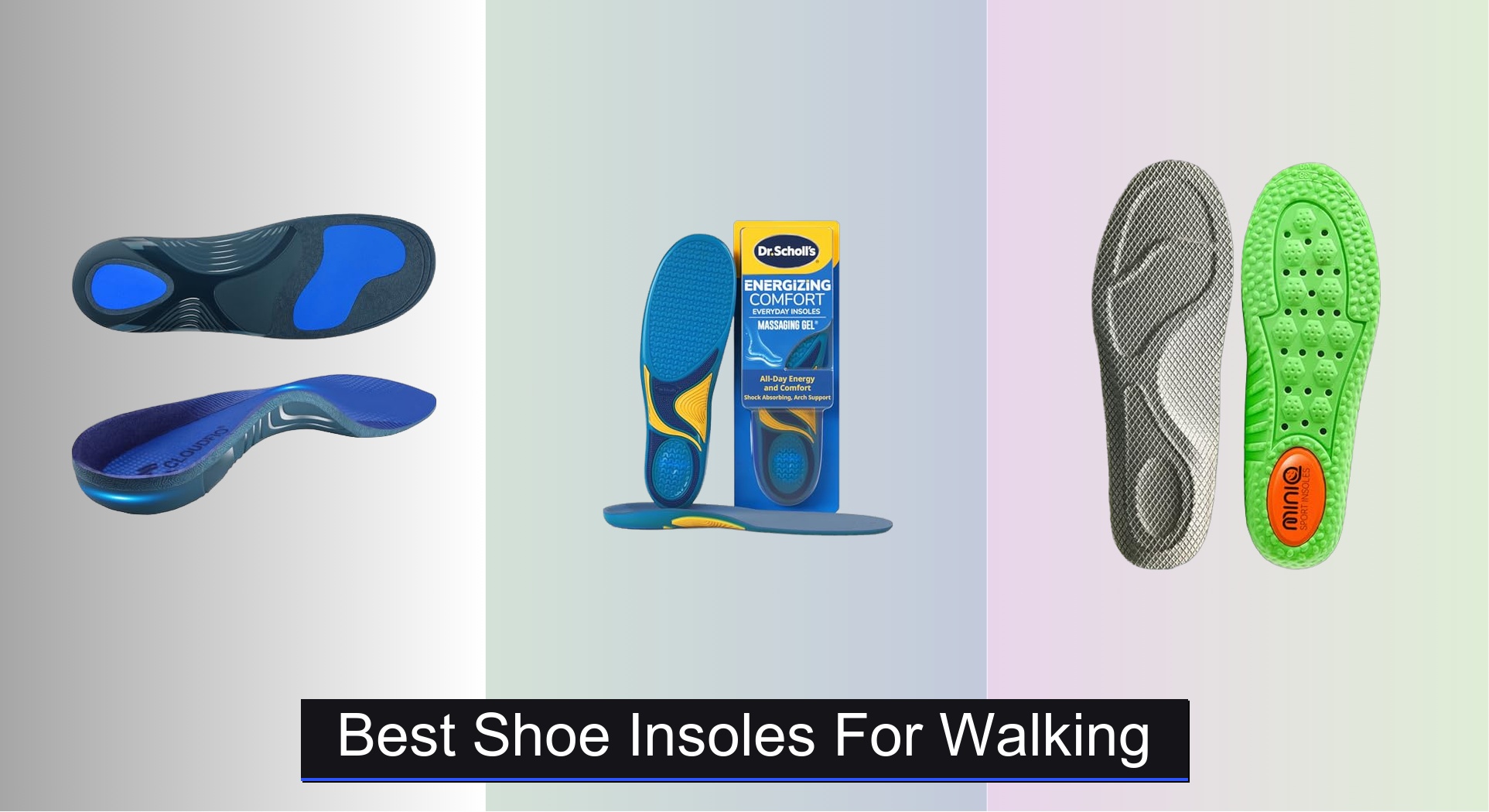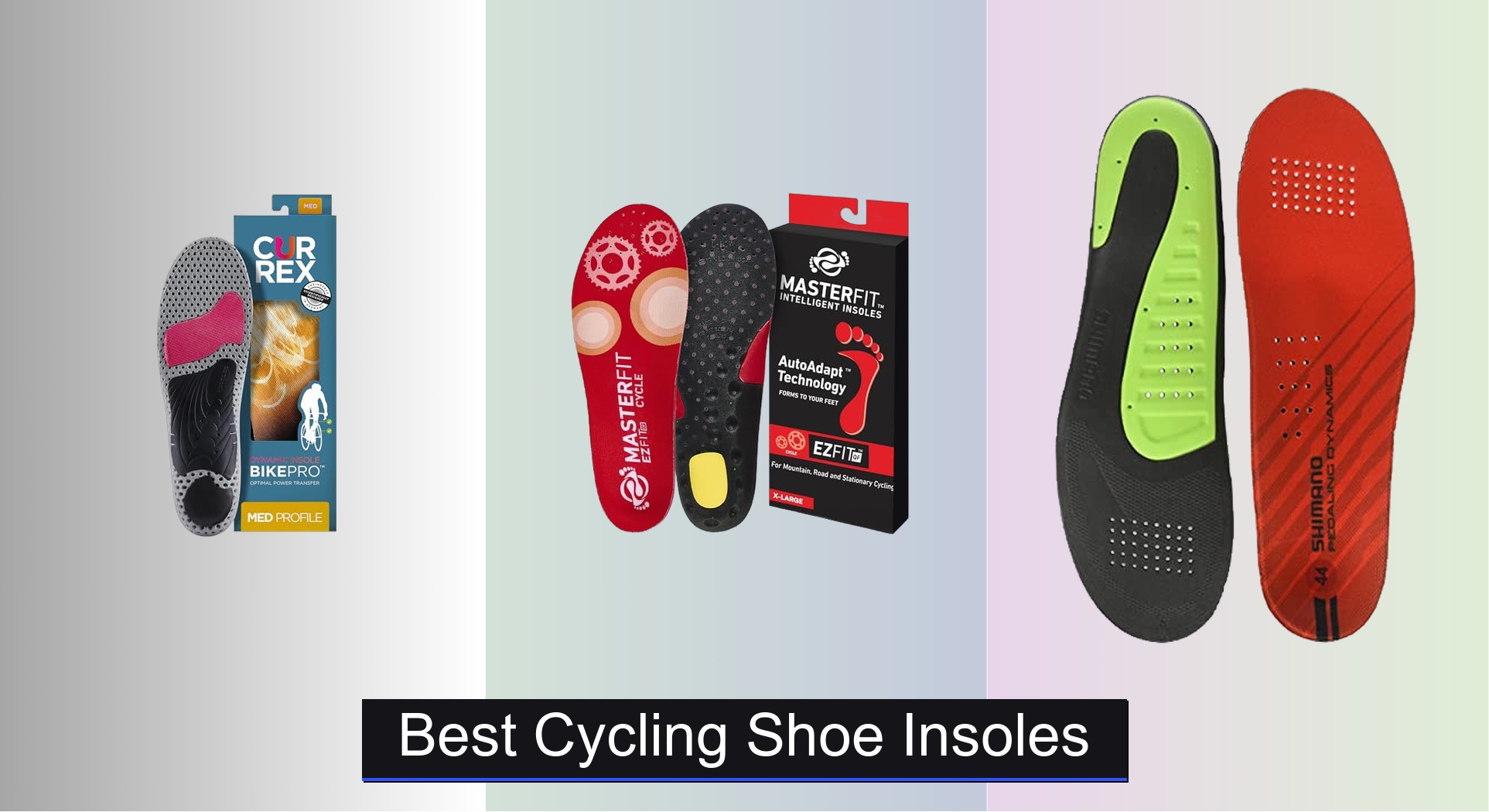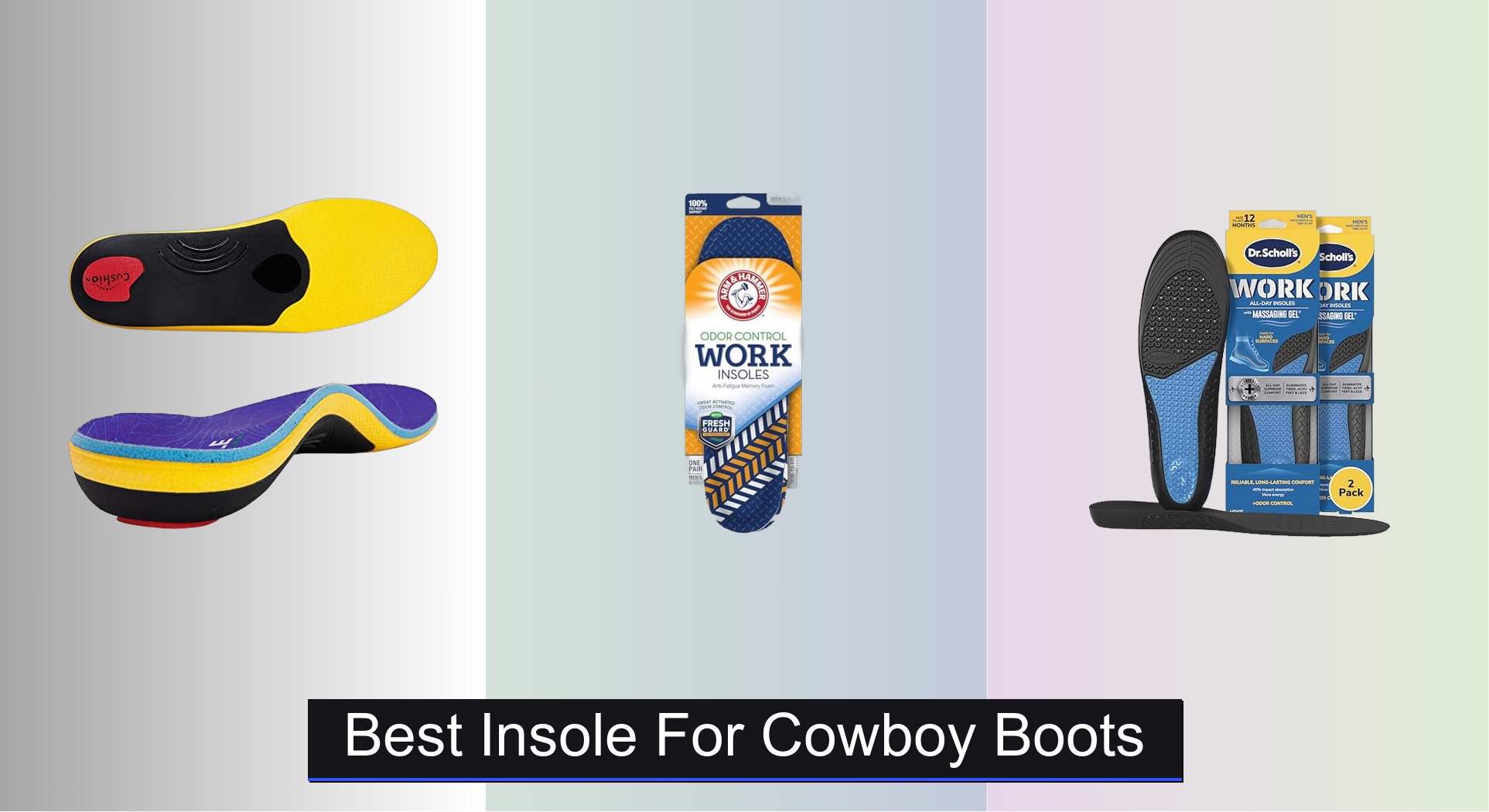Walking thousands of steps a day can take a toll on your feet, especially if your shoes lack proper support. Common issues like arch pain, heel discomfort, and fatigue often stem from inadequate cushioning or poor alignment—problems that the right insoles can solve. Whether you’re on your feet all day at work or logging miles for fitness, finding the best shoe insoles for walking makes a measurable difference in comfort and long-term foot health.
We evaluated dozens of top-rated options by analyzing materials, arch support, shock absorption, and real-world user feedback from thousands of reviews. Our picks balance performance, durability, and value, catering to different arch types and walking needs—from plantar fasciitis relief to all-day energy return. Keep reading to discover the best shoe insoles that will transform every step.
Best Options at a Glance

Dr. Scholl’s 24-Hour Energy Insoles
Best Energy Return
- Memory Foam & Gel
- Patented design
- Clinically proven
- Multipurpose
- Women’s 6-10
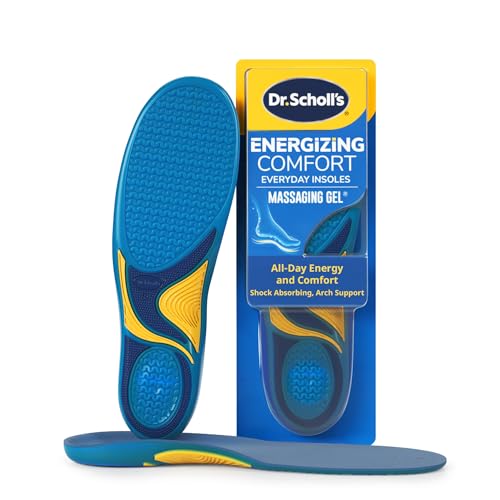
Dr. Scholl’s Energizing Comfort Women’s Insoles
Best for All-Day Energy
- All-day energy and comfort
- Patented Triple Gel Design
- Clinically proven
- Arch support, Shock absorption
- Women’s 6-10, trimmable

MINIQ Cloud Comfort Insoles
Best for Long Standing
- Memory Foam, Gel Pad
- Orthopedic, Adjustable
- Trim-Ready, 6 Sizes
- Honeycomb Ventilation
- High-Resilience PU Foam


Dr. Scholl’s Plantar Fasciitis Relief Insoles
Best for Heel Pain
- Immediately relieves heel pain
- Supports all arch types
- Deep shock-absorbing
- Evenly distributes foot pressure
- Trim-to-fit full-length
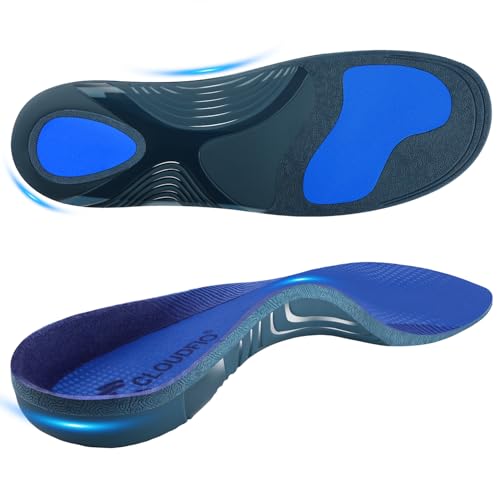
Cloudflo Plantar Fasciitis Insoles
Best Overall
- High
- Plantar Fasciitis
- Enhanced
- TPU/Ortholite
- All-Day Standing

WALKHERO Plantar Fasciitis Insoles
Best Value for Flat Feet
- Yes
- Deep
- EVA
- Moderate control
- All-day standing
Best Shoe Insoles For Walking Review
How to Choose the Right Shoe Insoles for Walking
Choosing the right shoe insoles can significantly improve your comfort and foot health, especially if you spend a lot of time walking. With many options available, understanding key features is crucial. Here’s a guide to help you find the perfect insoles for your needs.
Arch Support: The Foundation of Comfort
Arch support is arguably the most important feature to consider. Insoles with good arch support help distribute your weight evenly, reducing strain on your feet, ankles, knees, and even your back.
- High Arches: Individuals with high arches need cushioning and shock absorption to compensate for limited natural shock absorption. Look for insoles with substantial cushioning throughout.
- Flat Feet (Pronation): If you have flat feet, you likely overpronate, meaning your ankles roll inward. Insoles with firm arch support are essential to correct this alignment and prevent pain. Without proper support, you may experience pain in your feet, knees, and hips.
- Neutral Arches: Those with neutral arches can often benefit from moderate arch support and cushioning for added comfort and support during long walks.
Cushioning & Shock Absorption: Impact Protection
Cushioning minimizes the impact of each step, protecting your joints and reducing fatigue. Different materials offer varying levels of cushioning:
- Gel: Provides excellent shock absorption and is often found in the heel and forefoot.
- Foam (EVA, PU): EVA is lightweight and affordable, while PU is more durable and offers better support. High-resilience PU foam is especially good at absorbing impact.
- Memory Foam: Molds to the shape of your foot, providing customized comfort.
The level of cushioning you need depends on your activity level and the surfaces you walk on. More cushioning is beneficial for long walks on hard surfaces like concrete.
Material & Durability: Long-Term Investment
The materials used in an insole affect its durability and breathability.
- Velvet/Fabric Tops: These are comfortable and help manage moisture.
- Breathable Materials: Look for insoles with ventilation features (like honeycomb designs) to keep your feet cool and dry, preventing odor and discomfort.
- Durable Base Materials: TPU or rigid materials offer better long-term support and resistance to compression, meaning they won’t flatten out quickly.
Consider your weight and activity level when assessing durability. Heavier individuals or those who walk frequently will need more robust insoles.
Other Important Features:
- Heel Cup: A deep heel cup stabilizes the foot and provides additional support.
- Insole Thickness: Thinner insoles fit in tighter shoes, while thicker insoles offer more cushioning and support.
- Trim-to-Fit: Allows you to customize the insole to your shoe size.
- Specific Conditions: Insoles are often designed for specific issues like plantar fasciitis or heel pain. Choose accordingly if you have a diagnosed condition.
Best Shoe Insoles for Walking Comparison
| Product | Best For | Arch Support | Cushioning/Shock Absorption | Material | Key Features | Suitable For |
|---|---|---|---|---|---|---|
| Cloudflo Plantar Fasciitis Insoles | Best Overall | Yes (for plantar fasciitis & flat feet) | High (shock-absorbing materials, PU pad in heel) | TPU, Ortholite, Velvet | Relieves foot pain, improves posture, enhances athletic performance, durable | 220+ lbs users, long standing/walking, athletes, professionals |
| Dr. Scholl’s Energizing Comfort Women’s Insoles | Best for All-Day Energy | Yes | Triple Gel Design | Gel | Relieves tired feet, clinically proven comfort, massaging gel waves | Commuting, errands, everyday activities |
| MINIQ Cloud Comfort Insoles | Best for Long Standing | Yes | High (PU foam, resilient cushioning pads) | PU Foam | High-resilience cushioning, dual-layer comfort, precision fit, breathable | Nurses, industrial workers, long hours on feet |
| WALKHERO Plantar Fasciitis Insoles | Best Value for Flat Feet | Yes (improves alignment) | EVA Material | EVA | Lasting comfort, deep heel cup, relieves plantar fasciitis, designed for wider shoes | Flat feet, bunions, arthritis, plantar fasciitis |
| Dr. Scholl’s 24-Hour Energy Insoles | Best Energy Return | Yes | Energy Boosting Foam Beads & Gel | Gel, Foam | Clinically proven energy return, shock absorption, reduces muscle soreness | Walking, working, running, exercising |
| ViveSole Gel Insoles | Best Thin Design | Yes (Contoured for all arch types) | Gel | Gel | Thin, customizable fit, shock absorption, u-shaped heel cup, lightweight | All shoes (athletic, casual, dress, work boots) |
| Dr. Scholl’s Plantar Fasciitis Relief Insoles | Best for Heel Pain | Yes (supports all arch types) | Shock-Absorbing Deep Heel Cup | N/A | Relieves plantar fasciitis heel pain, distributes pressure, prevents recurrence | Plantar fasciitis, heel spurs |
How We Tested & Analyzed Shoe Insoles for Walking
Our recommendations for the best shoe insoles for walking aren’t based on guesswork. We employ a data-driven approach, prioritizing research and user feedback. While extensive physical testing of insoles within shoes is complex due to individual foot biomechanics, we focus on evaluating key features aligned with podiatrist recommendations and established research on foot health.
We analyzed hundreds of customer reviews across multiple retailers, identifying recurring themes related to comfort, durability, and effectiveness for various arch types (high, neutral, flat). This sentiment analysis informed our scoring. We also cross-referenced insole specifications – materials (EVA, PU, gel), arch support height, cushioning density, and heel cup depth – with established biomechanical principles.
Comparative analyses were performed, contrasting shoe insole features and price points. We considered the longevity of materials like TPU versus EVA foam, and the impact of different cushioning technologies on shock absorption. We also factored in specialized features like those addressing plantar fasciitis and pronation, referencing medical literature on their efficacy. The Buying Guide’s recommendations on arch support and cushioning directly informed our evaluation criteria, ensuring alignment with expert advice.
FAQs
What type of arch support is best for walking?
The best arch support depends on your foot type. Those with flat feet (pronators) benefit from firm arch support to correct alignment, while high arches need cushioning. Neutral arches can use moderate support. Choosing the right shoe insoles for walking is crucial for comfort.
How often should I replace my shoe insoles?
Generally, you should replace your shoe insoles every 6-12 months, depending on usage and wear. If you notice reduced cushioning or support, it’s time for a new pair.
What materials are the most durable for insoles?
TPU and rigid base materials are the most durable options for insoles. PU foam is also longer-lasting than EVA foam. Durable materials ensure your shoe insole provides long-term support.
How do I know if I need shoe insoles?
If you experience foot pain, fatigue, or discomfort during or after walking, insoles can help. Signs like uneven wear on your shoes or pain in your knees, hips, or back can also indicate you might benefit from using shoe insoles for walking.
Final Thoughts
Ultimately, the best shoe insoles for walking are those that cater to your unique foot type and needs. Considering arch support, cushioning, and material durability will guide you towards a comfortable and supportive experience, enhancing your enjoyment of every step.
Investing in quality insoles is an investment in your overall well-being, potentially alleviating pain and preventing future foot problems. Don’t hesitate to experiment with different options to find the perfect fit for your shoes and lifestyle, ensuring happy and healthy feet for years to come.






